Sign up for The Wild
We’ll help you find the best places to hike, bike and run, as well as the perfect silent spots for meditation and yoga.
You may occasionally receive promotional content from the Los Angeles Times.
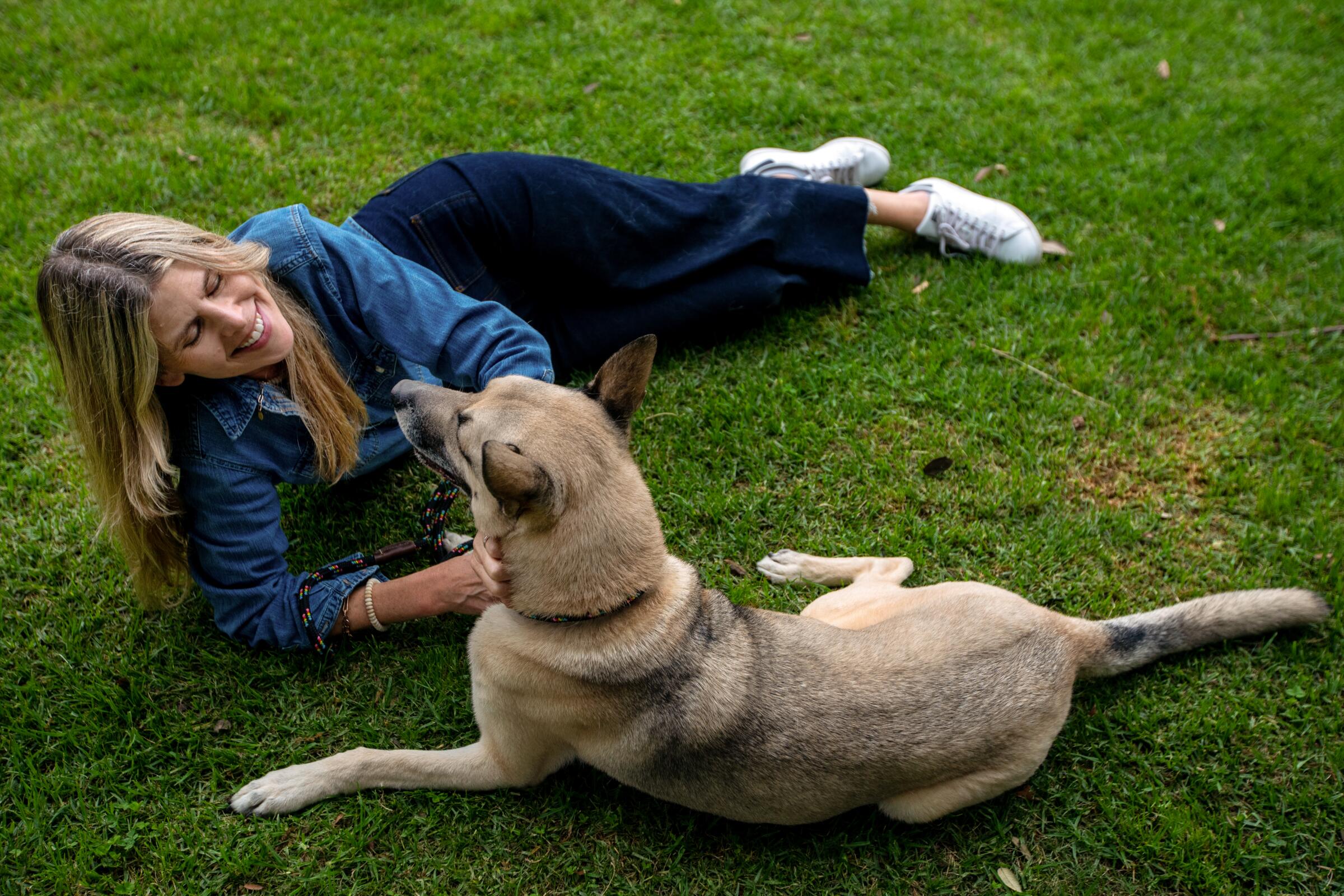
The scent of cut grass. A flash of teeth. Screams. Blood. These are the things I recall about the hazy July morning our family dog attacked a man at the park.
Just months earlier, we’d won the shelter lottery on a big, young, filthy, shepherd-y mutt. He was all plush beige fur and Cleopatra eyeliner; our friends called him “supermodel” and “genius.” With a few chunks of chicken, our 7-year-old son instantly taught him to roll over and jump through a Hula Hoop. Importantly, our new dog loved kids and ignored our cat. We named him Buddy.
“You got the world’s best dog!” said basically everybody, including strangers on the street. This made me beam. In our Northeast Los Angeles neighborhood, strays had always just shown up and we kept them — I never actually chose a dog before. This time, though, I’d done extensive research — Petfinder, adoption events, lengthy applications — and I was determined to find the perfect rescue dog for our family. And I did. We were all in love.
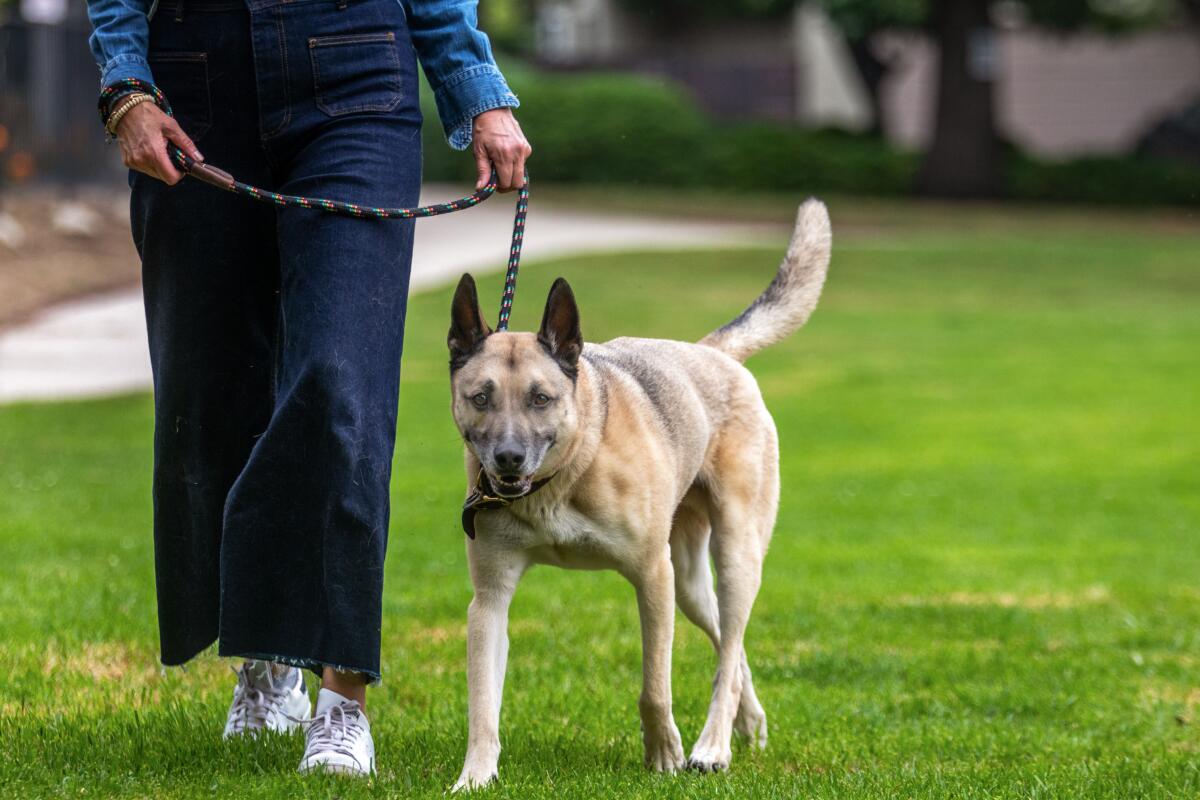
Then, the park incident. With Buddy leashed at my side, we passed a group playing football. One guy suddenly ran toward us, and Buddy lunged.
The screams from my memory were mine. Denial had me saying, “It’s just a nip, right?”
But multiple bites warrant the word attack.
While his friend brought a car around, the victim consoled me. “It’ll be OK,” he said. As they left for the ER, I got his card.
L.A.’s animal services agency is understaffed and relies on volunteers. At one overcrowded shelter, dogs sit in kennels for weeks or months without being walked.
Once alone, I fearfully eyed the dog at the other end of my leash and wondered, “Who are you?”
Then I noticed the weighty card stock in my shaking hand bore the crest of a Beverly Hills law office.
But to my great relief and wonder, this man did not sue us. I over-thanked him the next day when I delivered a get-well gift, and asked him why.
“I can tell you’re trying to do a good thing for a dog,” he said.
Through chaos and puncture wounds, this stranger somehow saw me. I was trying to do a good thing. Where did I go wrong?
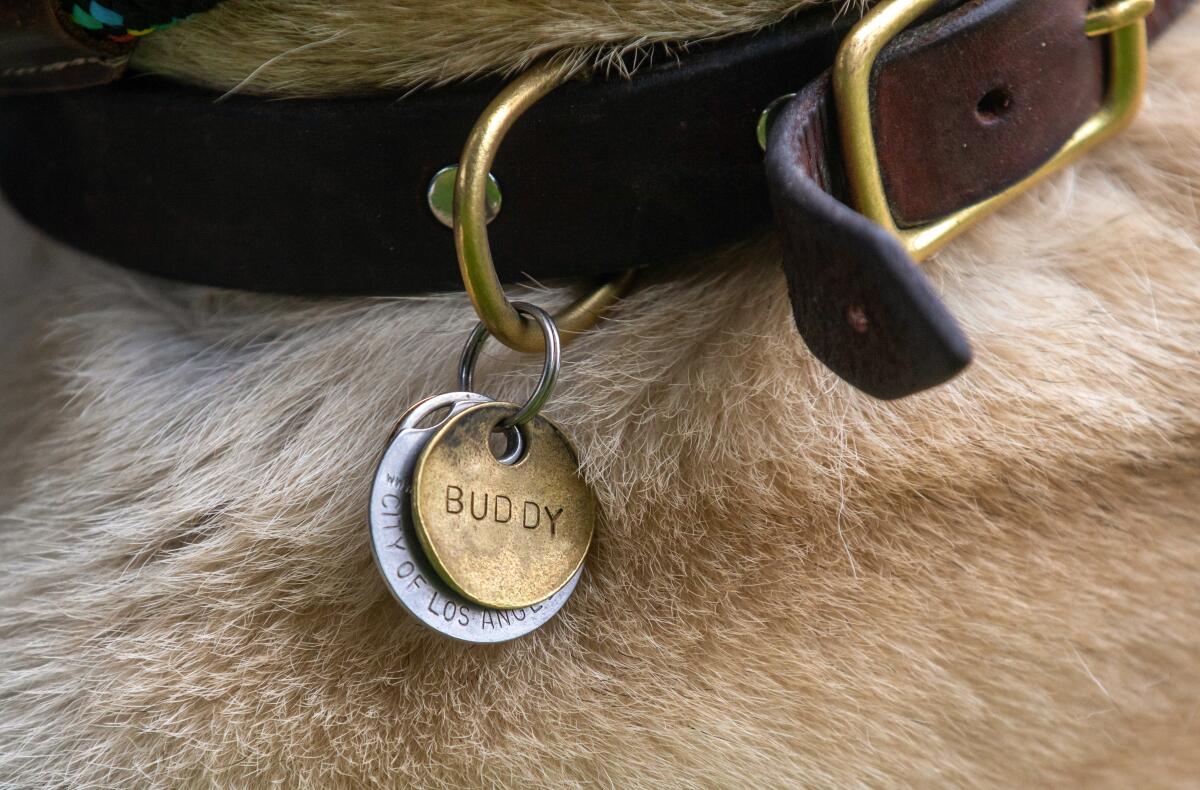
Since arriving in L.A. in my 20s, I’ve had a knack for finding abandoned dogs. I’ve fostered some, and kept a couple. I’ve also spent hours online networking shelter dogs, connecting them with the right rescues, packaging them like Hollywood movies, with someone to foster and funds crowdsourced for training and medical bills. The love of a dog has always been a stabilizing force for me. Growing up, my family cared deeply but brokered in alcoholic tumult. Dogs were my saviors.
Large, injured, stinky, wily, too smart for their own good — I loved them all. But I drew the line at aggressive dogs. I just didn’t know what to do with them. They scared me.
If I returned Buddy to the L.A. County shelter, I feared he’d be euthanized, but if I kept him, I had no idea how to keep everyone else safe.
Oh, Buddy.
After our vet ruled out any physical condition that might cause a behavior change, I sought the advice of L.A.’s bad-dog experts. They immediately sniffed out my crisis of confidence and responded like screenwriters pitching a script.
“You got a Ferrari, when what you need is a minivan.”
“You got an elite athlete, but you’re Little League.”
“You got an AK-47 when all you can handle is a BB gun.”
They sensed the surface irony of my situation, but down a level was this: I was the person who relied on dogs to buoy me in times of upheaval, but now I had upheaval for a dog. I was also the person committed to rescuing dogs others abandoned — I couldn’t abandon my own.

The trainers’ comments gnawed at me, fraying the last sinews of my certainty. I no longer trusted my judgment. I drove all over the city to attend classes and private trainings. I did whatever these trainers told me to do.
This included following orders to use a booming voice and practice “walking with authority” by essentially playing chicken in public spaces while on my own, without Buddy. Trying so hard to get this training right, I ended up body-checking a woman in a personal care aisle. She scowled as I apologized and picked up the deodorants we knocked over.
Which beaches in Los Angeles and Orange counties allow dogs? Check our list to find out.
Meanwhile, the more I worked with Buddy, the more agitated and unpredictable he became. After a vet visit in which four techs held him down to draw blood, he growled at me anytime I came near. I stopped feeling safe in my own home. He spent too much time in his crate.
Desperate, I doubled down on the training. Something had to work.
Despite any good sense I had left, and warnings from our vet that this was an obsolete and potentially dangerous concept, I followed a trainer’s advice to get “alpha” on him. It was then that Buddy bit me.
I went to bed distraught and had nightmares — one where I was the French woman with the face transplant who had been mauled by her own dog. In another, my son roughhoused with friends and Buddy attacked. I awoke sick to my stomach.
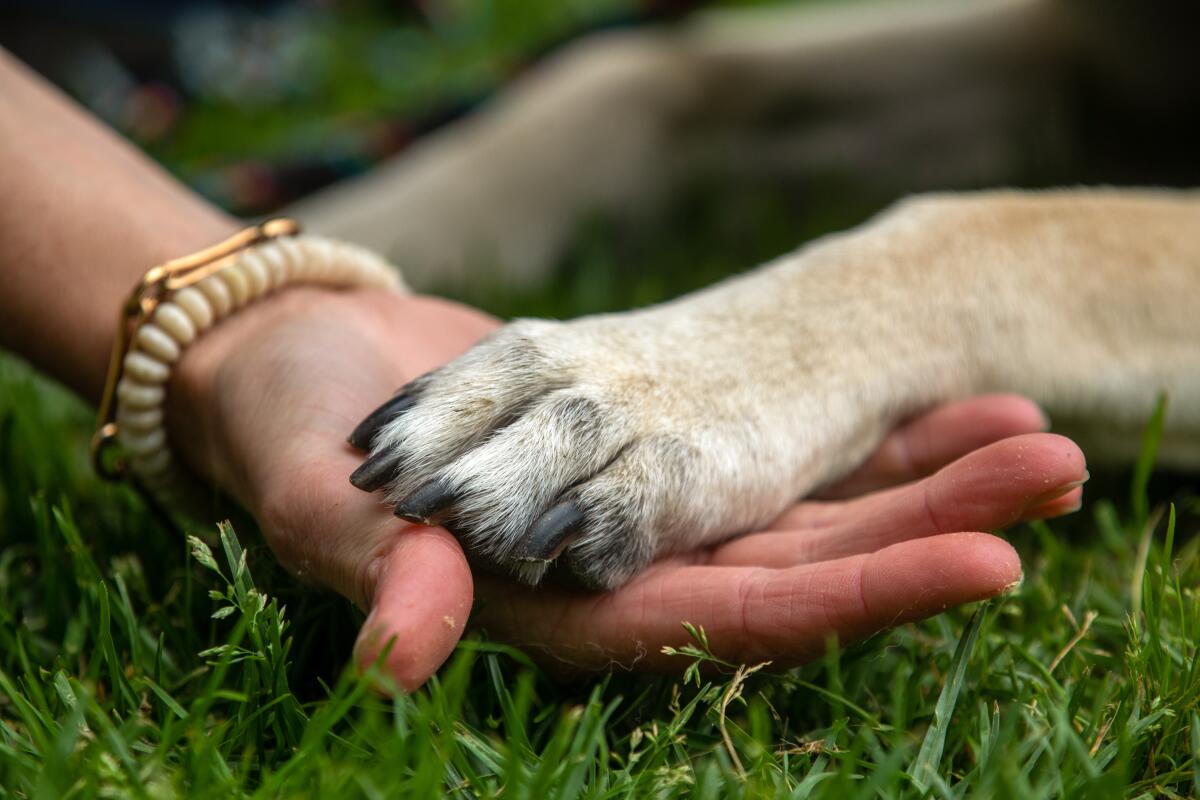
“We’ve got to get rid of this dog,” I said to my husband. The words stung as I said them aloud.
But instead of giving Buddy up, we did nothing.
Absolutely nothing.
It was my husband’s idea.
“Let’s just let him be,” he said.
As it turns out, this is exactly what the rescue community recommends for a new dog. It’s called decompression, and involves keeping life quiet and boring while the dog adjusts. It is not intuitive for someone like me, whose tendency is to shower animals with love, affection and enrichment. Doing nothing was incredibly hard work.
An uneventful month went by.
Slowly, Buddy grew calmer. I did too. I was able to step back and find a trainer specializing in protection breeds who seemed a good fit for us both. But like trainers before her, she first trained on me.
“You say you want a ‘family dog’ — what do you mean?”
The twinkle in her kind eyes commanded me to question my own expectations.
I felt strongly that humans should not harbor unrealistic ideas that set dogs up for failure. We should not, for instance, ever expect dogs to allow toddlers to ride them or pull food out of their mouths. But there were things I envisioned for Buddy, like him not biting people.
“We’ll work on that,” she assured me.
Try these dozen routes to make you — and your pup — happy hikers.
I also imagined taking Buddy to Little League games, and having friends over without lengthy introductions that required visitors to sit still, avoid eye contact and ignore his big, nervous canine energy while he sniffed, often their private regions, before everything was cool. These are not unrealistic expectations for some dogs, but they are for Buddy.
“Work with the dog you’ve got,” this trainer told me.
Looking into Buddy’s gorgeous brown eyes — though not directly, because I learned that’s confrontational to him — I realized my sometimes-aggressive dog and I had things in common. Both of us craved stability, and panicked when we lost control.
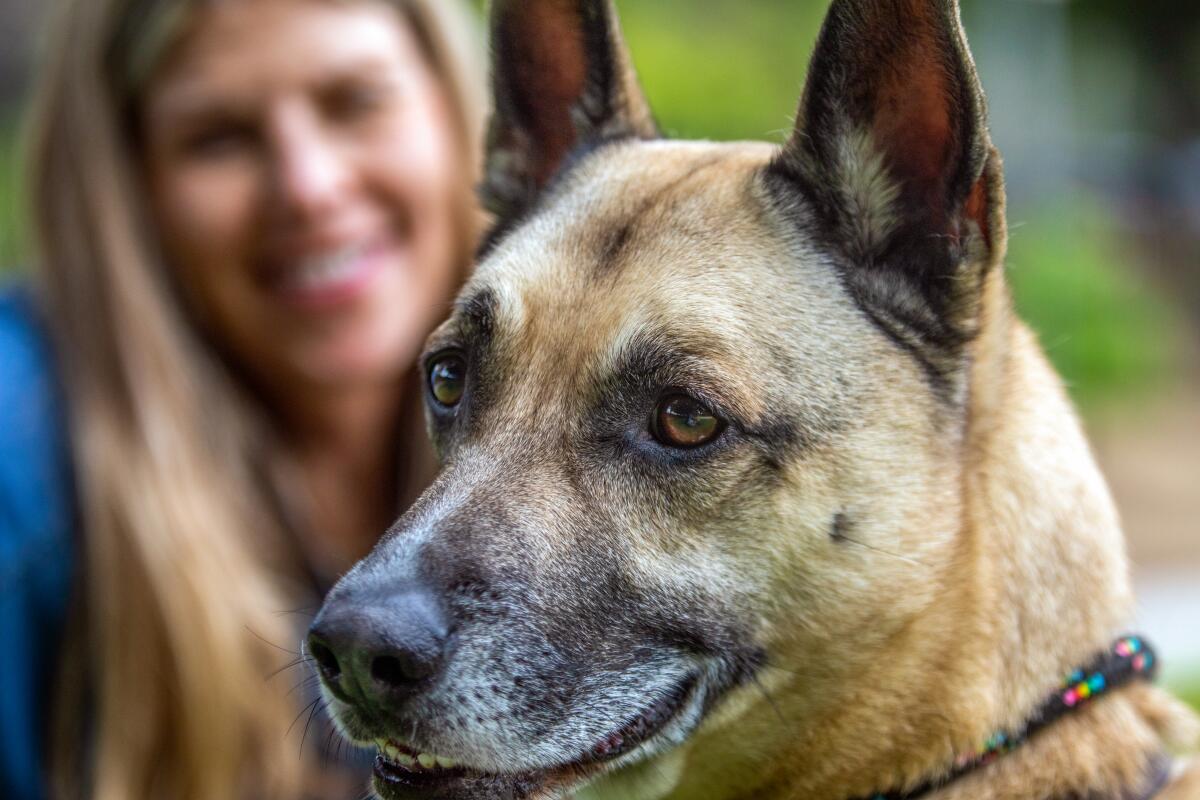
For me, panic was throwing every training method possible at Buddy, trying to fix him overnight, flooding his anxious brain with new commands and techniques that only stressed him out more. I submitted to trainers who meant well but led me astray.
Decompression gave us both a chance to remember who we were.
When we got Buddy, he was an adolescent. Now our son is the teen of the house, and wanting a longer leash, challenging me to relinquish control in new and uncomfortable ways. My experiences with Buddy have helped me trust that I can exist alongside this chaos, that it’s OK to let go a little bit, even when faced with unknowns. While “doing nothing” may not always be the answer, sometimes it allows for necessary breathing room in relationships with canines, and humans.
Back when Buddy was in training, I took a leap of faith and let him roam freely around the house (instead of dragging a leash as he usually did at this point) one morning while everyone else slept. My heart sank when I lost sight of him and heard a scream. I ran to my son’s room to find him laughing hysterically in his 6-foot-high loft bed. Ever the athlete, Buddy had vaulted up there and was joyfully licking his face.
Multiple licks warrant the words “kiss attack.”
We call this “Sixty Pounds of Good Morning!” It’s how our son wakes up to this day.
We got the world’s best dog.
Sign up for The Wild
We’ll help you find the best places to hike, bike and run, as well as the perfect silent spots for meditation and yoga.
You may occasionally receive promotional content from the Los Angeles Times.